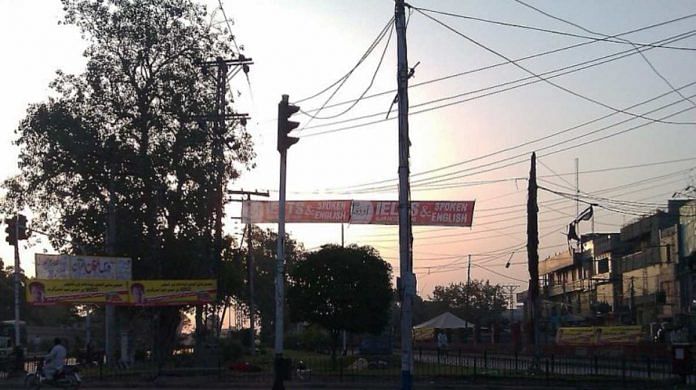The political crisis that pitched Pakistan’s prime minister Imran Khan from office wasn’t just about the failure of his anti-corruption agenda and mismanagement of an economy where inflation running at nearly 13% has driven months of opposition protests. It’s also, as with so many of Pakistan’s political crises, about energy and exchange rates.
For decades, heavy dependence on imported energy has constrained growth. To break out of its chronic pattern of stagnation, Pakistan needs more power for its industrial, household and transport sectors. Whenever that has happened in the past, however, a rising bill for imported fossil fuels has prompted one of its periodic balance-of-payments crises. The International Monetary Fund bailout that’s widely expected within months would be Pakistan’s 19th since the early 1970s.
The problem has been recognized for years. Former prime minister Nawaz Sharif planned to reduce the power sector’s dependence on imported gas and fuel oil with a fleet of nuclear and lignite coal plants. Khan, by contrast, cancelled some of those coal generators and pledged to more than double hydroelectric output to lift renewables to 60% of the generation mix.
The failure of both policies to back wind and solar, however, has cut Pakistan off from by far the cheapest source of indigenous energy. Until that’s fixed, it will continue to lurch from one economic disaster to another.
The challenge of providing power to the world’s fifth-most populous nation means Pakistan’s energy plans don’t lack for ambition. Imported LNG that currently provides nearly a fifth of grid generation is expected to drop close to zero by 2030 as gas is diverted to the household and industrial sectors, according to the government’s latest power system plan. Hydro, which currently accounts for about a third of the mix, would rise to 50%, or 92 gigawatts, over the same period. In theory, that would drive the imported share of grid power down to 12% from about 41% of the total.
The problem lies in that over-dependence on hydro, however. Dams in Pakistan are notoriously vulnerable to fickle monsoon rains, with low water levels last summer causing rolling power cuts of seven hours a day or more. A major cause of China’s grid shortages late last year was a similar light rainfall season, which drove hydro generation in October to fall 12% from a year earlier, prompting a resurgence of coal mining.
Faced with such a situation, Pakistan would have little option but to increase imports of fossil fuels to make up the shortfall, forcing the government to choose between power cuts and a currency crisis. In the longer term, climate change itself may have unpredictable impacts on the availability of glacier-fed water in the Himalayas, further decreasing the reliability of dams.
The biggest loser remains wind and solar. Despite costs that are two-thirds lower than local coal and cheaper even than hydro, they’re envisaged to make up a stubbornly small 10% or so of the power mix as late as 2030. Doubling or even tripling that share would diversify domestic generation sources and provide a back-up to hydro without reaching the levels at which their own variability should be a problem for the grid.

Renewables will also ensure that Pakistan — one of the countries most at risk from climate change, with some of the world’s most polluted cities — won’t be causing long-term damage to its own population and environment.
In his negotiations with the IMF, new prime minister Shehbaz Sharif should look to roll back the perverse taxes on renewable power that have been imposed as part of previous talks, and replace fuel subsidies introduced last month with direct support to low-income households instead. He should also advance proposals to install wind and solar power and sell Pakistan’s fossil-fired generators into the Asian Development Bank’s Energy Transition Mechanism as a way to fund their early closure.
Beyond that, the government should look to the example of the investments made by Asia’s second-richest man, Mukesh Ambani, just across the border in India’s Gujarat state. Reliance Industries Ltd.’s Jamnagar oil refinery at a stroke eased the pain of India’s oil imports on the country’s current account, providing a stream of oil product exports to offset its crude imports. Now he’s planning to invest $78 billion on renewable and green hydrogen projects there to take advantage of one of the world’s best resources of wind and solar power.
Such ambition could ultimately turn energy from an eternal liability for Pakistan, to an asset. Politicians who don’t want to see their careers ended by one of the country’s perennial economic crises should take heed. –Bloomberg
Also read: After crying foreign conspiracy, Imran Khan targets judiciary for not probing ‘letter’




